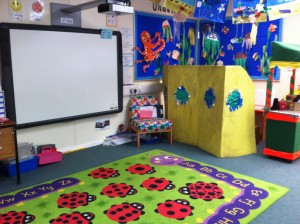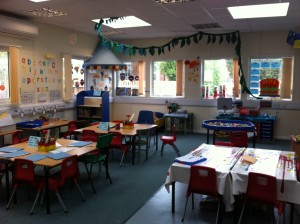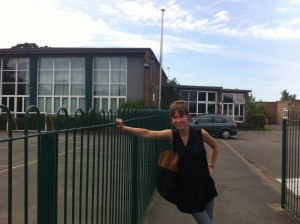FINAL WEEK IN LONDON
The final week has come and gone, and I continued to learn and experience new differences about the way teachers and classrooms work in London. As I stated in the previous entry, being in the reception level class was a breath of fresh air. My teachers seemed as though they actually wanted to be there, and you could see that, because of this, the children were eager to learn, attentive, and very happy (for the most part). I continued to watch Phonics lessons, and was constantly impressed with these age 4 and 5’s level of reading and writing. This is something that I haven’t witnessed yet in the classrooms I have worked in in Vancouver. Phonics is focused on so heavily here, from such a young age, and I am most definitely seeing the difference. Most of the reception class children were able to write very basic full sentences, save for about 3 or 4 of them. They went straight to their phonics sounds, and included their phonics gestures as well, which helped them remember the sounds.
The other day, I noticed many of the phonetical differences between the UK and Canada. For example, when the children were shown the “ch” sound, and asked to give examples of worlds that had “ch” in them, they would say words such as “train” or “track”, as many of them have been pronouncing those words as “chrain” or “chrack.” Another common mispronunciation was “th” sounds and “f” sounds, as they often get mixed up. “Heathrow” as “Heafrow”, for example. When the children were asked to give examples of the “th” sound, they would say “frow”, as in “throw.” I spoke with my teacher very briefly about the differences, and wondered if having a Canadian teacher at such a young age would make a difference. My reception teacher was from the UK, but the other reception class had a Canadian teacher.
I had a lovely long chat with the Friday teacher in our room, after our last day of teaching, and she went into detail about how teachers are assessed differently here. Someone who is in charge of assessment will come in to view a lesson, and their pay is either docked, or the teacher can be refused a pay raise if they don’t see a significant improvement on that day with a number of students. The stress levels of teachers at this school began to make sense to me when I was informed of this. I am sure there are other details that I am not aware of, but I did learn some of the many differences between teaching in the UK and Canada.
Overall, this experience was completely beneficial, informative, and I felt as though I learned a lot about my personal teaching philosophies. I got some wonderful ideas about teaching younger students (as this age was significantly younger than my grade 3 and 4s during practicum), and was so happy to experience a range of ages at Danson Primary School. The teachers and teacher’s assistants that were helpful, were very helpful, and I am grateful for them. This has truly been a remarkable experience, full of self-reflection, some helpful classroom observation, and broadening of my teaching perspective.
London Week 2
This experience, so far, has been nothing short of eye opening. Not in a negative way, just constantly noticing the differences in curriculum, classroom management, day plans, and objectives in the classroom.
I spent last Monday, Tuesday, and Wednesday in my year six room – the same one I was in the week before. On Thursday, we were given the opportunity to continue on in a new classroom. I asked for a younger year, as I haven’t had much opportunity with the little ones. I am now in Reception (ages 4 and 5).


This has been a huge shift in many ways, especially in terms of how the students are spoken to, and the overall energy of the classroom. I am happy to say that I am quite enjoying my two teachers (they team teach), and appreciate being in a room with more enthusiasm for learning. I am not very familiar with centres and student guided learning at that age, as my practicum was a grade 3 and 4 combined class, so this has been so useful and ensightful for me. I had a lovely teacher last Thursday, and then the team teacher who comes in on Friday really brightened my whole experience. She has been a breath of fresh air in terms of her attitude, energy, calming nature, and soft words. She has managed to gain respect and positivity towards learning from these students without losing her temper and snapping. The children seem happy and driven, and I spent most of the day smiling. She seems to really enjoy her job. She and I met after class, and she said that she would be happy to have me guide some lessons next Friday, which is also exciting, as they seem to have little or no real use for us Canadians. As I had mentioned in my previous blog entry, they are fortunate enough to have many adult bodies in the room, so our assistance is not direly needed, as it would be in B.C.
I am feeling fortunate to be ending my CFE on a high note, as my first week and a half were a slightly different vibe. I wasn’t feeling needed, and I wasn’t being introduced. That being said, I was learning so much about the differences in curriculum and teaching philosophies (in general), and this was entirely helpful for me. Now I am able to move into another class, knowing these differences, and actually play some sort of important role in the room.

Week 1 in London
There was a part of me that expected to be in a Monty Python movie for 3 weeks when I anticipated teaching in London. I am not completely off base, yet there are elements of the schooling here which I did not expect.

(This is me, standing outside of Danson Primary School on our first day.)
When we arrived on the Monday morning, we spoke briefly in one of the office meeting rooms, and then the principal, Jackie, showed us around the school. There were parts of it that really impressed me, such as the very hands on and nature focused playing areas for the younger years (nursery and reception), and the many bulletin boards throughout the school, demonstrating the student’s work, and progression throughout the years. For example, they had a board in the hallway which showed the student’s cursive (handwriting) in year one, up until the student’s in year six’s. This could have a positive outcome in terms of showing the progression and dedication that the student’s have at this school.
After walking around we were randomly placed in a classroom. I was placed in a year six room, and spent the week observing; assisting students who needed extra help with their reading aloud, maths, and other work.
The shape of the day heavily focuses on maths and literacy, which is Language Arts in Canada. I spoke to one of my teachers about it, and she mentioned that the focuses are on those two subjects, as they are seen as the most important. As an arts focused student (with a BFA in theatre performance), I question a lot of that. On the other hand, these student’s had extremely neat cursive, and were quite advanced in maths.

(Above is an example of one of the bulletin boards in my classroom. It is on Andy Goldsworthy, the British visual artist who works with manipulation of natural objects. This is also a lesson I did at Outdoor School.)
Some other differences that I have observed so far are…
The students are separated in their seating by level of ability, and seem to be aware of this seating arrangement. Classes in the same year move along at the same pace, for example, all of the year six classes do the exact same lessons as each other every day. The walls are covered with literacy and math terms, bright colours, hanging lights by the windows, a “working wall”, a ton of maps, and very minimal art work.
When the student’s begin a lesson, they are given the “L.O.” which stands for “learning objective.” They are asked to write that at the top of their page, along with their success criteria, which are the goals that they are expected to meet. This is all supposed to be done neatly, and in cursive.
Another obvious difference was the number of aids or “T.A.s” in the room. At times, there were up to three teachers working with students in the room, including the head teacher. This gives the student’s who need assistance a huge advantage, and is something that we are (obviously) lacking in BC. At times I felt a bit of a lack of direction in the room, as the teachers and class had such a routine, and I was sort of thrown into it, but I made my way around the room, and have gotten to know most of the students as I have helped them during work time.
We are meeting with the principal tomorrow (Monday) morning to find out which years and classrooms we will be in this week. She had mentioned that we would probably be moving throughout the different age groups (nursery, reception, years 1-6). I would love to be in a younger year, as my practicum was grade 3 and 4 combined, and I would like to try something new and less familiar!
